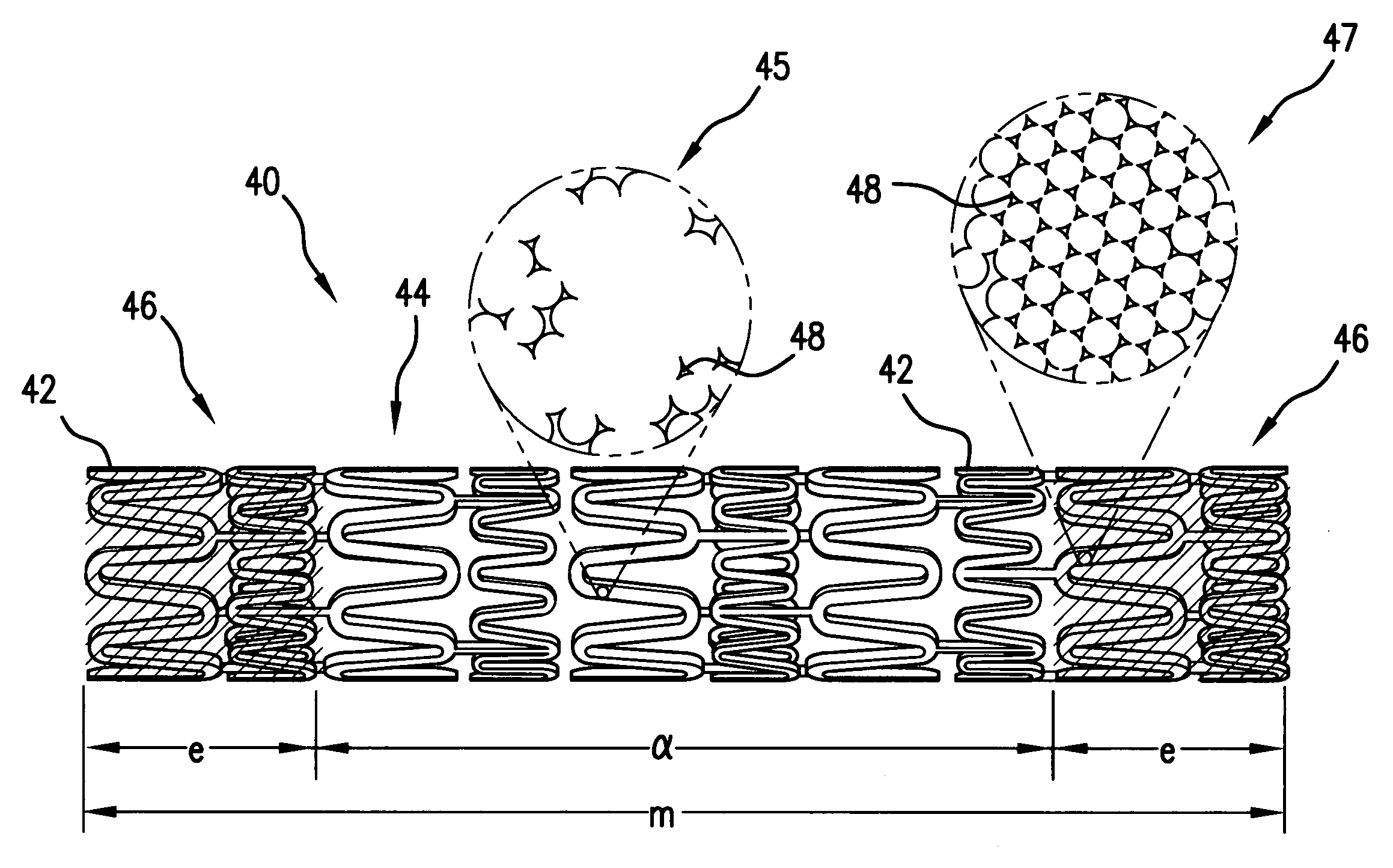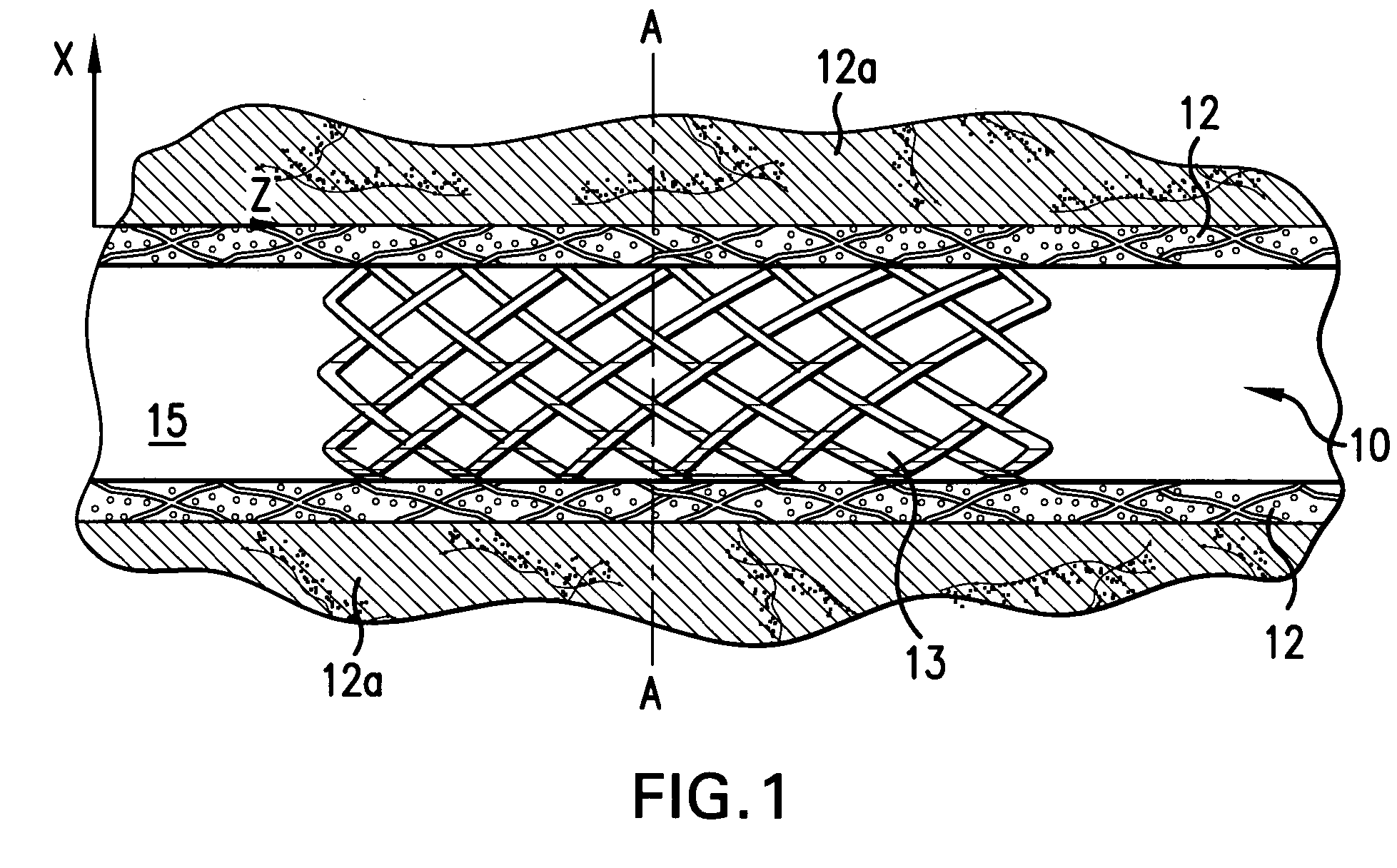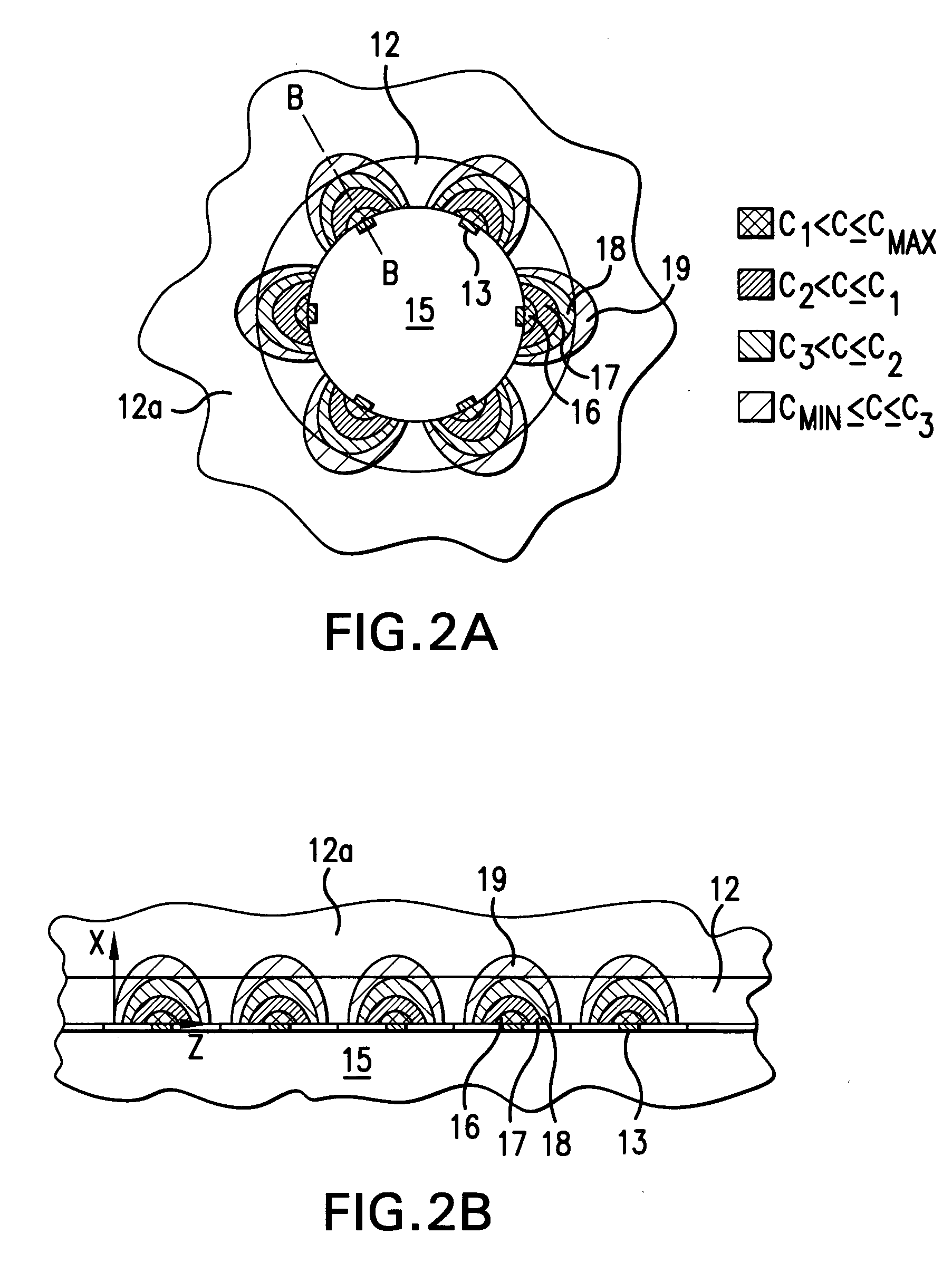Medical device for delivering biologically active material
a biologically active material and medical device technology, applied in the field of medical devices, can solve the problems of biologically active material becoming toxic, the release profile of biologically active material may not be uniform along the entire length of the medical device, and the mean concentration of biologically active material delivered, so as to achieve greater surface area and greater surface area
- Summary
- Abstract
- Description
- Claims
- Application Information
AI Technical Summary
Benefits of technology
Problems solved by technology
Method used
Image
Examples
Embodiment Construction
5.1. Medical Device for Delivering Biologically Active Material with Desired Distribution
5.1.1. Non-Structural Elements
[0043] Even if a biologically active material having a pharmacological effect is delivered to a body tissue, such effect may not result if the concentration of the biologically active material in the body tissue is below a certain concentration. Such concentration is referred to as the minimum effective concentration (Cmin) of the biologically active material in the body tissue. Each biologically active material has different Cmin. Cmin of a biologically active material also varies depending on the type of body tissue to which it is delivered. On the other hand, a biologically active material becomes toxic if its concentration is higher than a certain concentration. Such concentration is referred to as the maximum effective concentration Cmax. In addition, it is insufficient that the mean concentration of the biologically active material delivered through out the ...
PUM
| Property | Measurement | Unit |
|---|---|---|
| Fraction | aaaaa | aaaaa |
| Fraction | aaaaa | aaaaa |
| Fraction | aaaaa | aaaaa |
Abstract
Description
Claims
Application Information
 Login to View More
Login to View More - R&D
- Intellectual Property
- Life Sciences
- Materials
- Tech Scout
- Unparalleled Data Quality
- Higher Quality Content
- 60% Fewer Hallucinations
Browse by: Latest US Patents, China's latest patents, Technical Efficacy Thesaurus, Application Domain, Technology Topic, Popular Technical Reports.
© 2025 PatSnap. All rights reserved.Legal|Privacy policy|Modern Slavery Act Transparency Statement|Sitemap|About US| Contact US: help@patsnap.com



